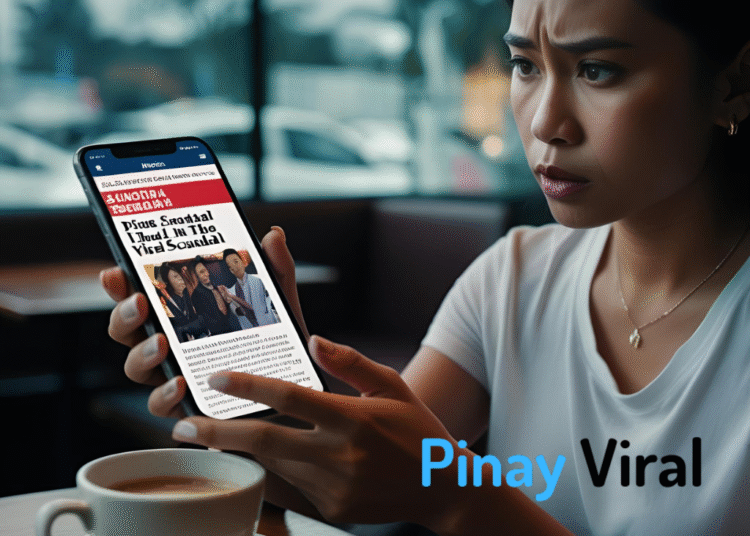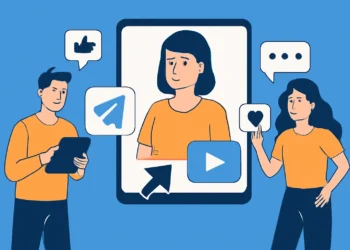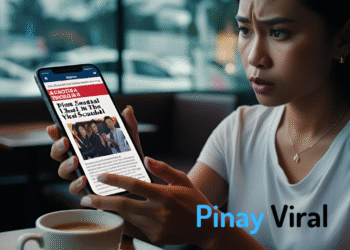The Origin of the Pinay Viral Scandal
The Pinay viral scandal erupted suddenly, captivating Filipino netizens and international audiences alike. It began with a seemingly ordinary video of a Filipino influencer controversy, but within hours, screenshots, clips, and social media posts circulated like wildfire. This rapid spread showcased how modern platforms can amplify personal incidents into national discussions.
From TikTok to Facebook, people speculated about the backstory, creating threads filled with theories, memes, and debates. Even mainstream media picked up the story, proving that viral TikTok/FB videos no longer stay confined to online communities. The scandal quickly became a talking point, highlighting how internet gossip in the Philippines influences both public opinion and pop culture.
What Is a Pinay Viral Scandal?
A Pinay viral scandal refers to an incident involving a Filipino woman that gains massive attention online, usually through social media platforms like TikTok, Facebook, or Twitter. These scandals often involve controversial behavior, personal disputes, or unexpected events that spark public debate, memes, and widespread sharing among Filipino netizens.
What makes it “viral” is how quickly content spreads, reaching millions in hours. People react, speculate, and remix the original content, turning a single moment into a national discussion. Essentially, a Pinay viral scandal showcases the power of internet gossip in the Philippines, highlighting both the fascination and influence of social media culture.

How Social Media Fueled the Controversy
Social media acted as a powerful amplifier for the Pinay viral scandal. Hashtags, shares, and viral challenges pushed the incident beyond the influencer’s usual audience. Each reaction sparked new debates, highlighting the unpredictable nature of social media outrage. What might have remained a small story escalated into a nationwide phenomenon.
Platforms like TikTok, Facebook, and Twitter allowed people to remix videos, post commentary, and create memes, turning the scandal into both entertainment and critique. The constant engagement kept the story trending, showing how viral content spreads faster than traditional media. Public interest continued growing, emphasizing the dynamic power of online communities in shaping narratives.
Moreover, Filipino netizens actively participated in the discussion, posting reaction videos and memes that drew attention from younger audiences. Some content highlighted humor, while others focused on moral critique. This interaction demonstrated that internet gossip in the Philippines has evolved into a participatory experience, where audiences co-create the story rather than just consume it.
Lessons and Takeaways from the Viral Scandal
The Pinay viral scandal teaches valuable lessons about digital responsibility. Online actions can have real-world consequences, from reputation damage to legal issues. Filipino netizens reacted strongly, reminding everyone that sharing content irresponsibly can harm others. Respect and caution are essential in a culture dominated by viral TikTok/FB videos.
For influencers and ordinary users alike, the scandal underscores the importance of digital etiquette and privacy. Even minor incidents can snowball into nationwide debates, showing how the online world amplifies mistakes. Social media can affect emotional well-being, professional opportunities, and social relationships, making thoughtful posting a necessity.
How the Viral Spread Happens
The Pinay viral scandal spreads rapidly because social media thrives on engagement. Once a video, photo, or post is uploaded, algorithms on TikTok, Facebook, and Twitter push it to users who are most likely to interact. Shares, comments, and likes multiply the content, creating a snowball effect.
Hashtags, memes, and reaction videos amplify the reach even further. Filipino netizens actively remix or critique the content, fueling discussions across platforms. This dynamic demonstrates how social media outrage transforms a single moment into nationwide attention, showing the undeniable power of internet gossip in the Philippines in shaping public perception.
Legal Concerns and Consequences
A Pinay viral scandal can have serious legal implications for everyone involved. Sharing private videos or photos without consent may violate Philippine privacy laws, including the Data Privacy Act. Defamation, cyber libel, and harassment charges can also arise, especially if content harms reputations or spreads false information.
Social media users often underestimate the law, thinking viral posts are harmless. However, Filipino courts have prosecuted both content creators and sharers when privacy rights were breached. Understanding digital responsibility and Filipino social media controversy is crucial, as reckless sharing can lead to fines, criminal charges, or long-term reputation damage.
Effects on the People Involved
The Pinay viral scandal affects not just reputations but mental and emotional well-being. Those involved often face public scrutiny, online bullying, and personal stress, which can escalate quickly when the incident trends across TikTok, Facebook, and Twitter. Even minor controversies can feel overwhelming.

Role of Technology and Digital Tools
Technology fuels the rapid spread of a Pinay viral scandal. Algorithms on platforms like TikTok, Facebook, and Twitter detect engagement patterns, pushing content to wider audiences almost instantly. Video editing apps, meme generators, and sharing tools make it easy for users to remix or repost viral moments.
Digital tools also amplify discussion. Hashtags, comment threads, and analytics track popularity, creating a feedback loop that keeps the scandal trending. The influence of social media outrage and viral TikTok/FB videos shows how technology doesn’t just host content—it shapes public perception, engagement, and even cultural trends in the Philippines.
What Can Be Done to Stop It
Stopping a Pinay viral scandal starts with responsible online behavior. Users should think before sharing content and respect privacy, consent, and digital responsibility. Reporting inappropriate posts, avoiding participation in online bullying, and fact-checking before reposting can slow the viral spread.
Platforms also play a role. Social media companies can implement stricter moderation, faster takedown procedures, and better algorithm transparency. Educating the public on Filipino social media controversy and internet etiquette empowers communities to reduce harmful virality, protecting both those involved and the broader online audience.
Why the Pinay Viral Scandal Matters Today
The Pinay viral scandal is more than just gossip—it reflects the evolving nature of online culture. Social media has become a central arena for public discourse, where humor, critique, and outrage intermingle. Filipino audiences engage actively, influencing which stories gain traction and how narratives develop over time.
This phenomenon also reveals the emotional stakes involved in online virality. Participants often face mental health pressures, public scrutiny, and professional risks. The scandal serves as a reminder that internet gossip in the Philippines carries weight, shaping reputations and highlighting social norms. Understanding this helps both creators and audiences navigate digital spaces responsibly.
Final Thoughts: Navigating Online Controversies
The Pinay viral scandal offers a compelling case study in modern social media dynamics. It shows how quickly private moments become public spectacles and how audiences can amplify, distort, or critique events. For anyone using online platforms, it underscores the importance of digital responsibility and privacy.
Ultimately, the story reminds us that viral moments carry real consequences. Filipino netizens’ reactions, meme culture, and online discussions reveal a society deeply engaged with social media trends. By reflecting on incidents like this, audiences and creators alike can learn to navigate online spaces thoughtfully, understanding the impact on those involved in the scandal while contributing positively to digital culture.
❓ FAQ Section
Q1: What is a pinay viral scandal?
A pinay viral scandal is digital content involving a Filipina, usually private, that is leaked or shared widely without her consent.
Q2: What should I do if I find a viral pinay scandal video?
The content should be reported immediately. Do not download, share, or comment on it. Encourage others to do the same.
Q3: Is it illegal to share a pinay scandal viral clip?
Yes. Sharing such content violates Philippine laws. Legal charges may be filed against the person responsible for uploading or distributing it.
Q4: Why do new pinay viral scandals keep appearing?
The increase in mobile devices and messaging apps has made it easier for private content to be shared without permission.
Q5: How can victims of a viral scandal pinay get help?
They can approach cybercrime units, legal aid organizations, or support centers for emotional and legal assistance.
Suggested URL : –Cyber Prevention Law in Philippines














